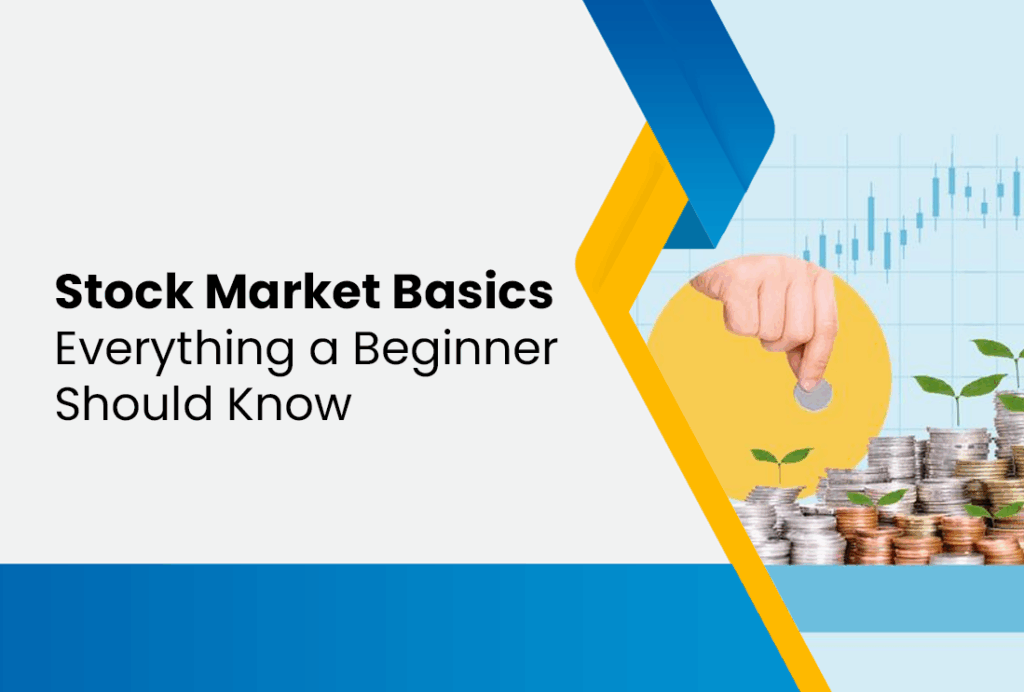Introduction
Every person hears about shares and trading yet only a few truly understand how it functions, many hesitate to enter because it looks complicated and uncertain, however the process is not as frightening when explained in a plain way. A person who wishes to grow wealth over years must know how this system works because it is a path that allows money to participate in business growth and collective economic progress. Seed Finserve believes every investor deserves clarity, steady guidance, and thoughtful direction, so this article explains the stock market in a way that feels natural for a beginner.
1. What Is the Stock Market and How Does It Work
The stock market is a platform where companies allow the public to own small pieces of their business which are called shares, and when these shares are offered, individuals who buy them become partial owners, holding both risk and potential benefit. Prices move constantly because demand and supply keep changing, one person may wish to sell, another may wish to buy, and the meeting point between them sets the value. Apart from this movement, the market also reflects how people feel about future growth, about business results, and about the larger economy.
2. Key Market Terms: Bull Markets, Bear Markets, Corrections and Volatility
Every beginner faces terms that sound unusual, yet each has a simple meaning. A correction is a fall between ten and twenty percent, usually lasting for weeks or months and often giving new chances to buy at lower levels. A bear market is a sharper decline crossing twenty percent, it can extend longer and it often brings fear, but it is part of normal cycles. A bull market is the opposite, where prices rise more than twenty percent and confidence spreads widely and these terms may appear in daily news yet they represent natural waves which repeat over time.
3. Long Term Investing and Short Term Tradin
One person may prefer trading daily while another may choose to remain patient, but evidence from history shows that those who hold for longer periods usually receive steady growth. Over decades, indexes have produced returns above average savings instruments and this pattern rewards those who allow time to work. Quick trading often creates stress, invites emotional reactions, and reduces profit because of charges and frequent mistakes. Patience often works better since compounding adds strength quietly, so every small gain today builds more tomorrow and the effect expands with years.
4. Diversification by Spreading Across Assets
No one can predict which company will rise or fall tomorrow, therefore spreading money across several shares or funds reduces damage from one poor choice. Mutual funds, index funds, or exchange traded funds gather many holdings in a single basket, giving wider exposure. By spreading across many companies and sometimes across sectors, the impact of one loss is softened while gains from others balance the result. However, if someone spreads money into hundreds of places without clear reason, growth may slow because the good performers become too small to influence returns meaningfully.
5. Starting with Mutual Funds and SIPs
For beginners who feel uncertain about choosing individual companies mutual funds are a suitable entry point since professionals manage them and the investor enjoys built in diversity. A systematic investment plan or SIP allows regular contribution, whether monthly or quarterly, so discipline grows naturally. When prices fall, the same money buys more units, and when prices rise, it buys fewer, which balances the average purchase cost, this is called cost averaging. Over years the effect of compounding also works silently, because returns produce more returns if left invested. Flexibility exists too, as the investor can change the amount or pause when personal needs arise.
6. Risks of Investing and Preparing the Mind
Anyone who invests must accept that returns are never guaranteed and values can decline, sometimes slowly and sometimes quickly. Savings in a bank account do not face the same risk, but they also rarely grow much above inflation. The market carries ups and downs, and an investor who remains calm during storms often benefits later when prices recover. Fear is natural, yet history shows that even deep declines eventually reverse when businesses rebuild and economies expand, so the main challenge is emotional control rather than technical skill alone.
7. Steps for Beginning the Journey
A person must first decide why money is being invested, whether it is for retirement, for children’s education, or for future security. Once the goal is clear, the next step is to judge how much uncertainty feels acceptable because some are comfortable with fluctuations while others are not. Then comes the choice of vehicle, and for most beginners a mutual fund through SIP offers a balanced start with managed oversight and after starting, reviewing progress once or twice a year helps to keep the plan aligned, and adjusting allocation maintains balance. Continuous learning adds strength, because awareness of economic events helps one remain steady.
8. How Seed Finserve Guides Investors
Seed Finserve provides personal discussions where individual needs are understood before any suggestion is given, and each plan is created according to unique goals. Guidance is available on a range of mutual funds and SIP strategies suited to different comfort levels, and every client receives support in monitoring performance. Reports are shared, portfolios are adjusted when necessary, and consistent review prevents drift from original purpose. With steady attention and caring involvement, Seed Finserve helps individuals remain focused even when markets fluctuate because confidence grows when trust and clarity exist together.
Conclusion
Learning about the stock market may seem like an endless task, yet with gradual understanding every beginner can feel ready to take the first step. Knowing how shares are traded, how prices rise and fall, and how cycles repeat brings confidence to continue. Long holding periods which include disciplined investment through SIPs, careful spreading across assets and awareness of risks combine to form a path that is both steady and rewarding. With Seed Finserve offering guidance, clarity, and support, every small step becomes meaningful and every plan receives direction that builds financial security over time.

